Pipe Dreams – The Art of Opium
PRIMITIVE - Friday, July 08, 2016Edited by Glen Joffe
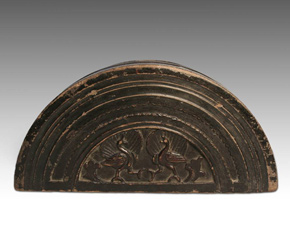 |
|
Hong Kong, July 1, 1997. The usual bustle of the island city was noticeably subdued, replaced by an almost tangible sense of excitement and nervousness as the citizens stood on the threshold of an historic event. The monsoon rains that swelled from drizzles to downpours could not keep the curious off the streets where enthusiastic supporters as well as wary protestors gathered together. Very soon, Hong Kong would no longer be as any of them remembered. The sovereignty of the protectorate was being transferred from Britain to China after 156 years of colonial rule.
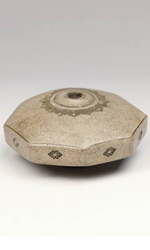 |
|
The Liu family was gathered in their living room in front of their television set where a broadcast of the formal flag raising ceremony was taking place. Conversation began to buzz in the apartment. It seemed all twelve members of the family had something to say, from praise to concerns. The youngest was a girl of thirteen who had questions. She turned to her great-grandfather and asked why this was all happening. The old man was quiet for a moment and then he pointed to a chest that held a lacquered tray with antique objects including a domed glass lamp with fine designs, a thick ivory pipe, a round earthenware bowl and other small paraphernalia. “Opium,” he told his great-granddaughter. His children admonished him for telling her about a drug, but he said it was history, culture, and most importantly, how he had gotten his family to Hong Kong. “What you see on the news,” he murmured, “This city… it all began with opium.”
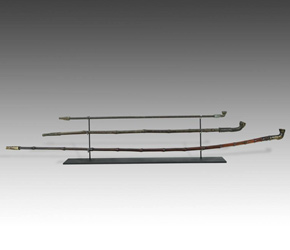 |
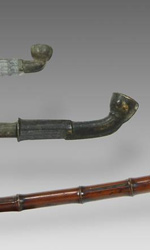 |
|
Back in the late 18th century, Britain was facing a dilemma in its trade with China. While there were many Chinese commodities that the Europeans wanted, the Chinese were not interested in anything the British brought to trade – except silver. To prevent a complete depletion of their silver depositories, the British were keen on demands for alternative commodities. They fixed upon the idea of trading opium, which was grown in India and consumed by the rich and noble in China. Despite a ban established by the Chinese government on opium imports, the British smuggled the drug in through hired merchants and corrupt port officials. Over several decades, the amount of illegal opium imports increased exponentially, eventually forcing the government to crack down on the traders and dump over 20,000 chests of opium into the sea. This triggered the First Opium War of 1839-42 which ended in Chinese defeat. The Treaty of Nanking, known as the ‘Unequal Treaty,’ was signed shortly after, forcing China to open more trading ports to the West, legalize opium imports and even cede Hong Kong to the British.
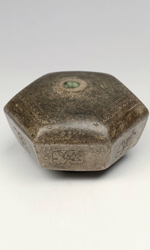 |
|
Opium quickly became available to all classes of Chinese society and while its addictive effects were debilitating, it surprisingly led to the creation of very intriguing artworks. It would not be farfetched to say that no other recreational drug in history inspired such artistic pursuit as opium in China. Unlike other "fast-hit" drugs, the preparation to smoke high quality opium was complex, time consuming, and often required a skilled assistant. For the wealthy, it was as much about the rituals as the high. They purchased exquisite pipes carved in wood, ivory, porcelain and jade. Some were decorated lavishly with mother-of-pearl inlays, tortoiseshell, silver and rawhide. Not only were these objects visually appealing, but the complex textures of the pipes were intentionally pleasing and enjoyable to the touch. Opium lamps or burners were also designed to captivate the smoker’s mind. The glass would be shaped in a way to refract and play with the flickering light of the flame, and was sometimes even carved with intricate shapes or nature scenes.
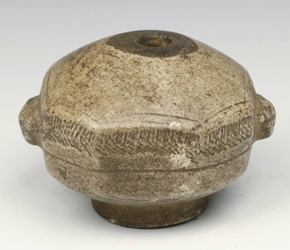 |
|
Opium bowls inserted into the tops of pipes were often made of earthenware, in particular from Yixing clay, which was a popular material used for teapots. Unglazed Yixing clay has a tendency to absorb residues, so the Chinese believed that every time tea was steeped in such a pot the taste was richer and more enhanced. Each steeping brought them closer to the perfect cup of tea. The same was believed of earthenware opium bowls.
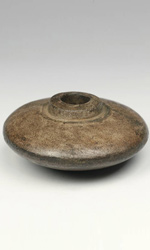 |
|
Another key element found in Chinese paintings or photographs of the period are the beds smokers reclined on in opium dens. Some claim these ‘day beds’ existed because intoxication levels brought smokers to the point of paralysis. While that may have been the case for some, day beds were intended to serve those of higher class smokers who had the time to lie leisurely for hours. In order to steadily vaporize opium over the lamp, lying down was the most comfortable position. Much like the pipes, bowls and lamps, opium beds were crafted with the highest levels of artistry and function. Some had elaborately carved footpads depicting Foo Dogs, perhaps to protect the reclining dreamers as they floated into an induced state of bliss.
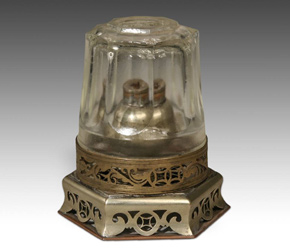 |
|
In the late 19th century the growth of opium, its distribution and consumption became a source of invaluable, albeit detested revenue to the Chinese government. Yet, this revenue was accompanied by resistance from the Chinese people to suppress opium completely. It wasn’t until 1949 when the Chinese Communist Party came to power that the opium trade was eradicated. From the farmers who cultivated the poppies to the wealthy, influential families who indulged in its use, the drug’s grip on the country was white-knuckled.
“It was how I made my fortune,” the old man Liu told his great-granddaughter. “I rolled opium for a nobleman and prepared his pipe nearly twenty times a day,” he said, looking down at his wrinkled hands. “When I left his services, he told me to take those.” He pointed to the antiques sitting on their living room chest. Although never mentioning the nobleman's fate, he simply stated, “Beautiful, but poisonous.” Much like its history, opium antiques have a dark, yet alluring quality. They are artful in their decadence and veiled in smoke and dreams.
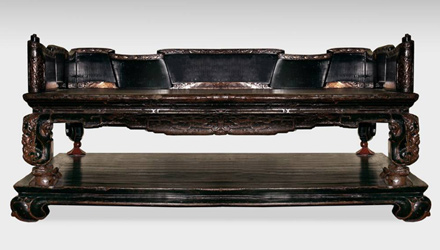 |
Download this Article: Pipe Dreams – The Art of Opium.pdf